

|
 |
Slayer (The) AKA Nightmare Island (Blu-ray)
[Blu-ray]
Blu-ray ALL - United Kingdom - Arrow Films Review written by and copyright: Paul Lewis (20th August 2017). |
|
The Film
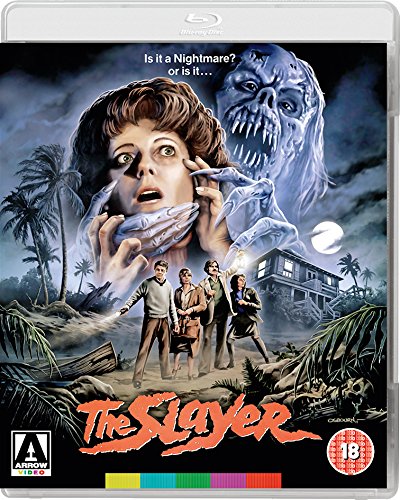 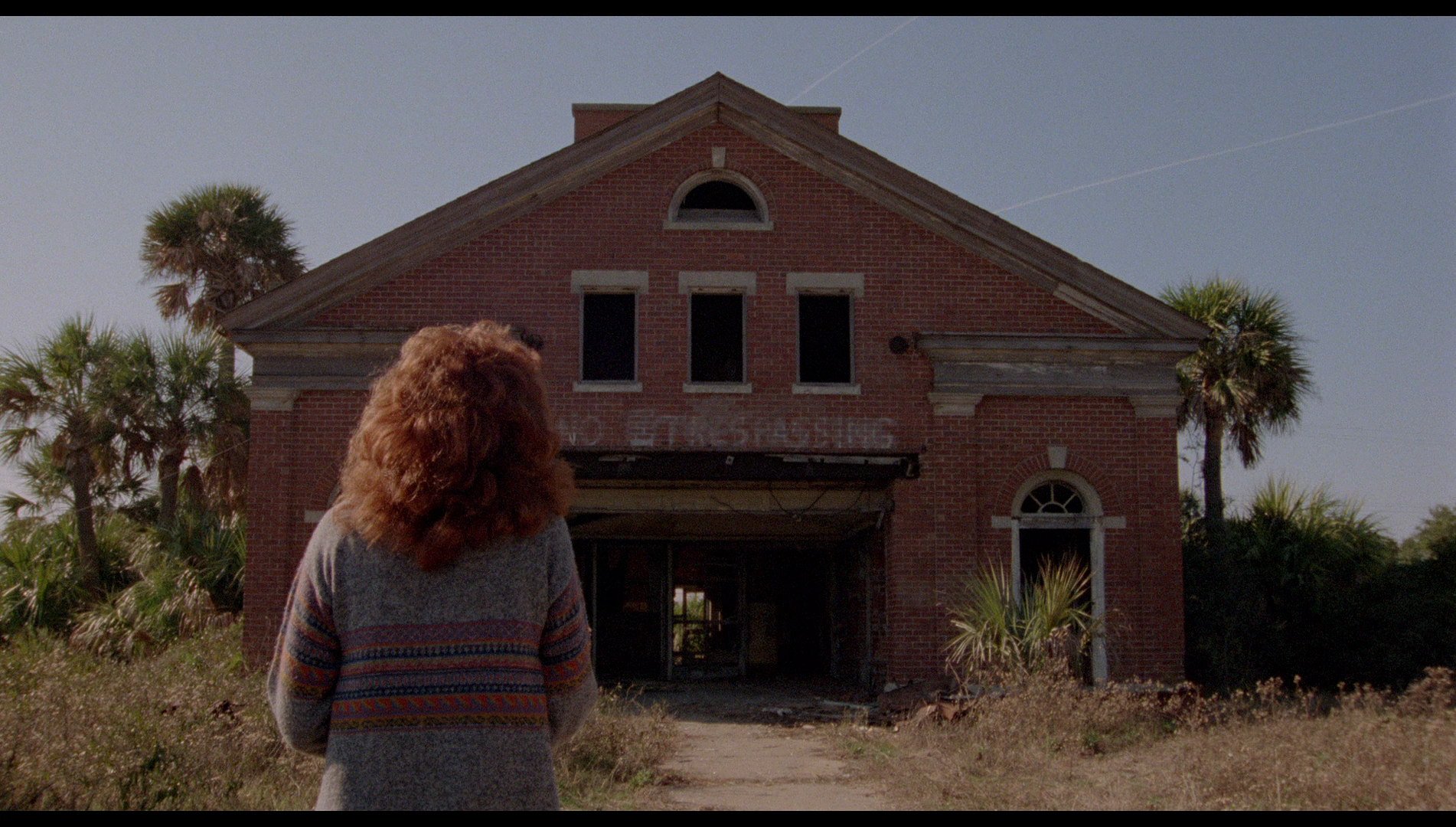 The Slayer (J S Cardone, 1982) The Slayer (J S Cardone, 1982)
Workaholic artist Kay (Sarah Kendall) has been plagued by reoccurring nightmares that her husband David (Alan McRae), a doctor, believes are caused by stress. Together with Kay’s brother Eric (Frederick Flynn), a director of commercials, and Eric’s wife Brooke (Carol Kottenbrook), David has organised for Kay to spend a holiday on Tybee Island, Georgia. Eric has rented a house on the island from a man named McNally, and the quartet are flown there by Marsh (Michael Holmes), who warns them that a storm is due to strike the island and, as there is no telephone service, they may be utterly cut off from the mainland. For keen fisherman Eric, the windswept island is a paradise; Brooke, however, sees it very differently. Meanwhile, Kay claims to recollect the McNally house from her nightmares and suggests she has had worrying premonitions of the island. As the storm begins to hit the island, a fisherman is shown being murdered by an assailant who uses the oar of the fisherman’s boat to stove in the head of the victim. Kay seems to witness this in one of her dreams. As Kay slips further and further into a spiral of depression, David begins to doubt her sanity. One night, David hears a strange noise in the basement of the house. He investigates and peers into the trap door leading to the elevator shaft. An unseen assailant slams the trap door down on to David’s neck, killing him. 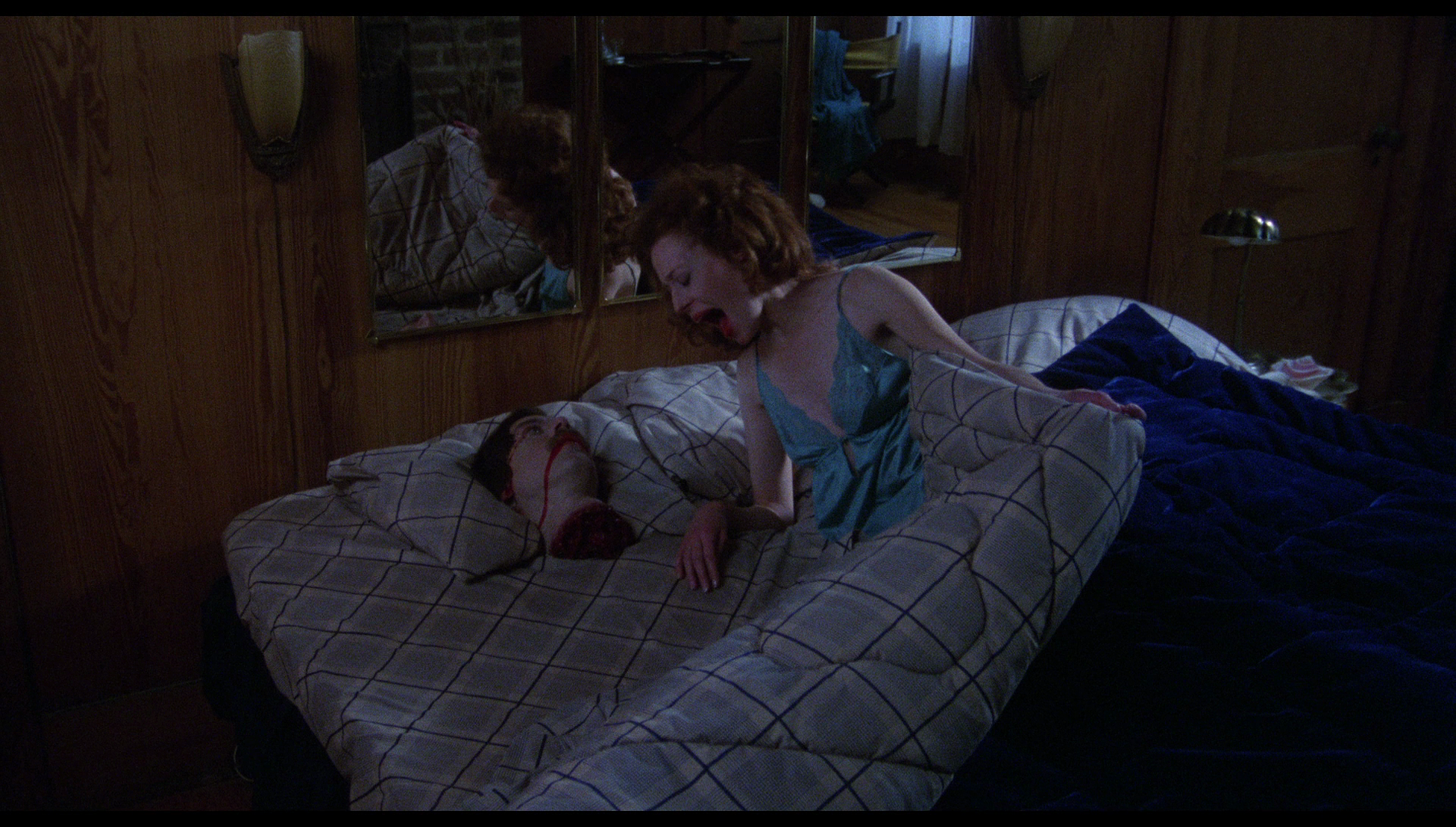 When Kay awakens, she begins to kiss David, who is in bed beside her. Blood slowly leaks from his eyes and mouth. Kay pulls back the sheets and, to her horror, discovers she has been kissing the severed head of David. However, this is only a nightmare and Kay awakens from this too. She discovers David is not there; she tells Eric and Brooke that she dreamt of David’s death, and the trio search the island for David. Kay finally finds David’s body, sans its head, hanging from the rafters in a derelict cinema on the island. When Kay awakens, she begins to kiss David, who is in bed beside her. Blood slowly leaks from his eyes and mouth. Kay pulls back the sheets and, to her horror, discovers she has been kissing the severed head of David. However, this is only a nightmare and Kay awakens from this too. She discovers David is not there; she tells Eric and Brooke that she dreamt of David’s death, and the trio search the island for David. Kay finally finds David’s body, sans its head, hanging from the rafters in a derelict cinema on the island.
Fearing that the monster attacks whilst she is sleeping, Kay tries desperately to stay awake. However, Eric makes the decision to drug Kay, ensuring that she sleeps. This opens the door for the monster in Kay’s dreams to enter the reality of Eric and Brooke. Anticipating Wes Craven’s A Nightmare on Elm Street (1984), J S Cardone’s ‘regional’ horror picture The Slayer features a killer who may or may not be provoked into action by the dreams of Kay. The Slayer had an even closer thematic neighbour in John Hough’s The Incubus (1982), in which a teenager believes his dreams to be creating an incubus which is responsible for a series of crimes. Certainly, in The Slayer Kay believes the killer to originate within her dreams – and she fears going to sleep owing to the belief that when she sleeps, the killer will attack her brother and his wife. ‘Don’t you see, it was just like a premonition all these years’, Kay says in reference to one of her reoccurring nightmares and the monster that invades her dreams, ‘I’ve created it and I’ll keep on doing it until it no longer needs me to give it life’. The origin of this belief is an event in Kay’s childhood, which Eric relays to Brooke: as a child, Kay was given a kitten. The kitten disappeared, until one day Kay and Eric’s mother discovered the animal’s corpse in a freezer in the garage. Kay believes that a creature in her nightmares was brought to life by her dreams, and it was this creature that was responsible for the death of her beloved pet. Insistent that she has seen the island to which she is taken for a holiday in her dreams, Kay anticipates a return of the creature that haunts her nightmares. Like A Nightmare on Elm Street, The Slayer moves towards a climax in which its protagonist desperately tries to stay awake in the hope of fending off the appearance of the monster that has been conjured up through her dreams. The identity of the killer is ambiguous for much of the film’s running time: Marsh seems the most likely suspect, but it also seems possible that Kay herself has been committing the murders. 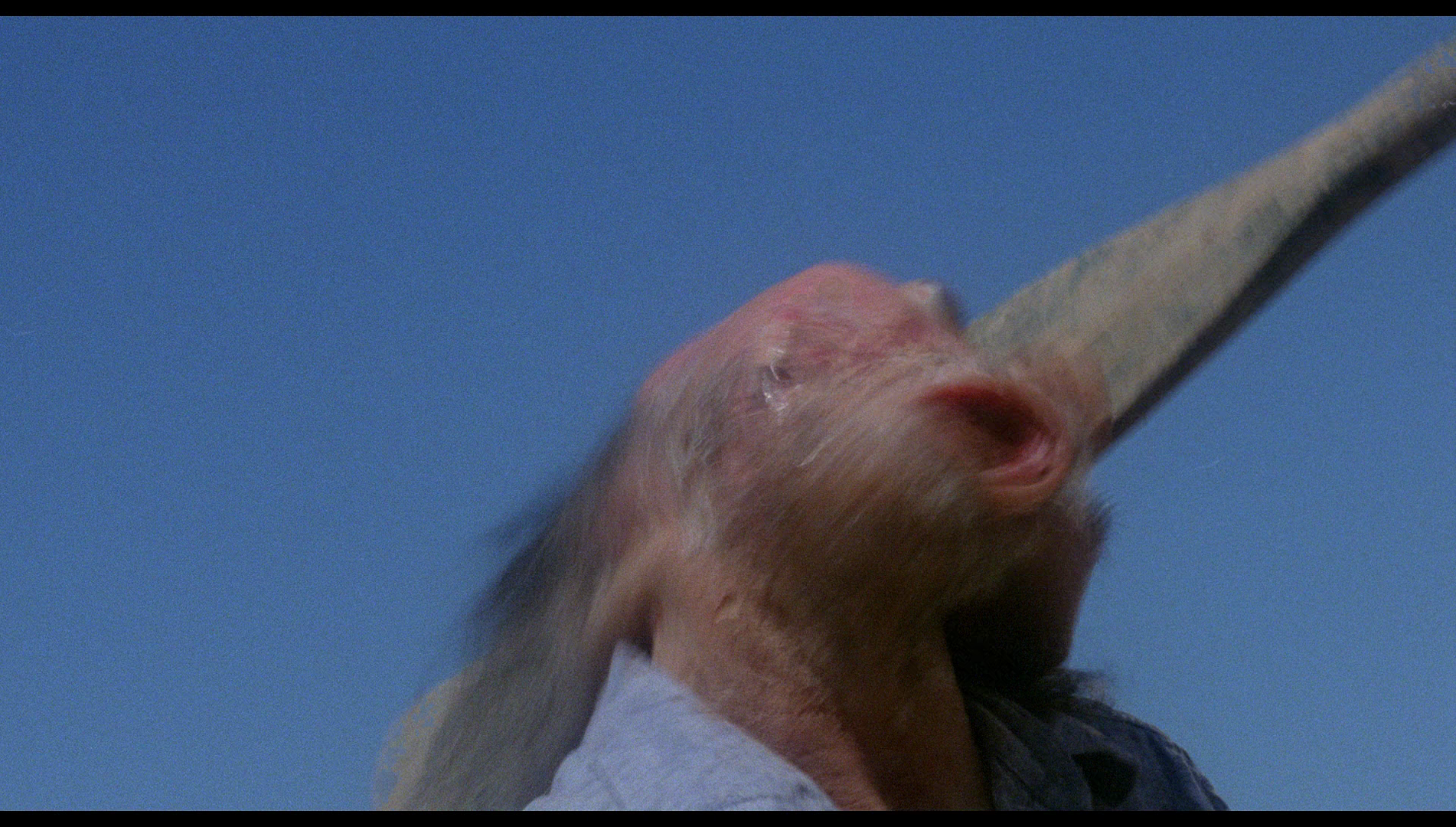 The film destabilises the audience’s perception of the narrative by featuring a number of sequences of horror which end with Kay awakening from a nightmare, suggesting that what we have just witnessed may be part of Kay’s dreams – imagery conjured up by her subconscious. In one of these sequences, a fisherman on the island is murdered with an oar that is used to crush his skull. Following this gruesome image, the filmmakers cut to Kay waking from a nightmare. Most likely owing to the perceived infallibility of vision (or, more accurately, photography) – which, of course, is a myth – it is fairly rare that films undermine the concept that what we are seeing is the objective ‘truth’; a notable example of a film that directly challenges the audience’s faith in visual representation is Alfred Hitchcock’s 1950 film Stage Fright, which is famous for featuring a controversial ‘lying flashback’ in which a flashback is presented from the perspective of an unreliable narrator, thus deceiving the audience into believing a false account of a specific series of events. The Slayer achieves something similar, establishing a number of scenes before cutting to shots of Kay waking up from a dream – suggesting that what we have seen is one of Kay’s nightmares. (‘I can’t explain it’, Kay says, ‘but sometimes when I’m drifting off to sleep I feel that […] when I wake up, my real life will be gone; my dreams will have taken its place’.) The film does this enough times that the viewer might begin to question what he or she is seeing, and the whole picture builds to a denouement – which seems to owe a noticeable debt to Robert Wiene’s Das Cabinet des Dr Caligari (The Cabinet of Dr Caligari, 1919) – that some might find deeply frustrating. The film destabilises the audience’s perception of the narrative by featuring a number of sequences of horror which end with Kay awakening from a nightmare, suggesting that what we have just witnessed may be part of Kay’s dreams – imagery conjured up by her subconscious. In one of these sequences, a fisherman on the island is murdered with an oar that is used to crush his skull. Following this gruesome image, the filmmakers cut to Kay waking from a nightmare. Most likely owing to the perceived infallibility of vision (or, more accurately, photography) – which, of course, is a myth – it is fairly rare that films undermine the concept that what we are seeing is the objective ‘truth’; a notable example of a film that directly challenges the audience’s faith in visual representation is Alfred Hitchcock’s 1950 film Stage Fright, which is famous for featuring a controversial ‘lying flashback’ in which a flashback is presented from the perspective of an unreliable narrator, thus deceiving the audience into believing a false account of a specific series of events. The Slayer achieves something similar, establishing a number of scenes before cutting to shots of Kay waking up from a dream – suggesting that what we have seen is one of Kay’s nightmares. (‘I can’t explain it’, Kay says, ‘but sometimes when I’m drifting off to sleep I feel that […] when I wake up, my real life will be gone; my dreams will have taken its place’.) The film does this enough times that the viewer might begin to question what he or she is seeing, and the whole picture builds to a denouement – which seems to owe a noticeable debt to Robert Wiene’s Das Cabinet des Dr Caligari (The Cabinet of Dr Caligari, 1919) – that some might find deeply frustrating.
In its ambiguous depiction of the theme of dreams intruding on reality, The Slayer seems to show the influence of European ‘art’ cinema; the film was often lumped together with the contemporaneous ‘slasher’ pictures, and in a similar manner to Gary Sherman’s Dead and Buried (1981, also a ‘video nasty’ and often mislabelled as a slasher film), in truth The Slayer doesn’t wholly fit the paradigms of the majority of slasher films – other than And Then There Were None-style plot structure, and Kay’s role as the film’s ‘Final Girl’. Most obviously, the characters, all in their mid-thirties or above, are all significantly older than the characters in most slasher films. The Slayer is an unusual film, very different to many of the contemporaneous slasher pictures. (Anecdotally, I remember during the 1980s and 1990s, some of my friends and fellow horror fans reacted very badly to The Slayer when I pressed my VHS copy into their hands and urged them to watch it, as they were expecting a more archetypal slasher film – and what The Slayer delivered was something else, something different to their expectations.) The influence of European art cinema also seems to be carried through the film’s juxtaposition of Kay’s work as an artist with her brother’s role as a director of commercials. (‘You were heading right for the top, then you throw in this surrealist crap’, Eric tells his sister, ‘People have to relate to it [art]. It’s gotta be real’.) Where Kay is willing to believe that what she has witnessed in her dreams may have some relationship with reality, Eric dismisses this suggestion as nonsense and posits a more rationalistic interpretation: ‘What do you think happened?’, Eric asks Kay in exasperation after David has vanished, ‘That he disappeared into thin air? […] Everything’s got a logical explanation’.  Kay is a fine artist, and the dialogue suggests that her work has transitioned from a ‘straight’ representation of the world to more surrealistic imagery. ‘I paint what I see’, Kay asserts at one point. ‘No you don’t’, David says, ‘You paint what you dream’. We see some glimpses of her work: notably, near the start of the film, we see a painting of a house which seems to float above the ocean and is surrounded by clouds. We may take this as a portent of the McNally house which Kay claims to have seen in her dreams and to which she is taken by her brother and husband for their vacation. Later, we see Kay sketching an image of two figures in silhouette standing near a door that seems to open onto the sky. Though the film makes some subtle association between Kay’s dreams, their relationship with reality, the notion of the subconscious and the surrealistic imagery within her art, this is a theme that is underdeveloped; certainly, the fact that Kay’s brother is a director of commercials (a role that puts him at odds with his sister’s work as a fine artist), and one of the most memorable locations in the picture is a derelict cinema that Kay explores and in which she discovers David’s headless corpse, seems to hint at further development of this theme that is frustratingly abandoned as the narrative heads towards its climax. The relationships between the landscapes of dreams and nightmares, cinema and commercial art, the subconscious and the world of the fine artist are hinted at but not explored in any great detail. Kay is a fine artist, and the dialogue suggests that her work has transitioned from a ‘straight’ representation of the world to more surrealistic imagery. ‘I paint what I see’, Kay asserts at one point. ‘No you don’t’, David says, ‘You paint what you dream’. We see some glimpses of her work: notably, near the start of the film, we see a painting of a house which seems to float above the ocean and is surrounded by clouds. We may take this as a portent of the McNally house which Kay claims to have seen in her dreams and to which she is taken by her brother and husband for their vacation. Later, we see Kay sketching an image of two figures in silhouette standing near a door that seems to open onto the sky. Though the film makes some subtle association between Kay’s dreams, their relationship with reality, the notion of the subconscious and the surrealistic imagery within her art, this is a theme that is underdeveloped; certainly, the fact that Kay’s brother is a director of commercials (a role that puts him at odds with his sister’s work as a fine artist), and one of the most memorable locations in the picture is a derelict cinema that Kay explores and in which she discovers David’s headless corpse, seems to hint at further development of this theme that is frustratingly abandoned as the narrative heads towards its climax. The relationships between the landscapes of dreams and nightmares, cinema and commercial art, the subconscious and the world of the fine artist are hinted at but not explored in any great detail.
The Slayer was shot on Tybee Island in Georgia, the isolated island setting in combination with the plot structure recalling Mario Bava’s And Then There Were None-inspired thrilling all’italiana Cinque bambole per la luna d'agosto (Five Dolls for an August Moon, 1970). The island provides a very effective setting for the narrative, the story seeing the characters disembark on the plane that carries them to their destination before coming across an abandoned fort and a derelict, decaying cinema before arriving at the McNally house. The sense of isolation is comparable to that achieved in, for example, Sam Raimi’s The Evil Dead (1981). Certainly, the island setting seems to amplify Kay’s belief that her nightmares are becoming reality. ‘I feel like I’ve been here before’, Kay tells the others when Marsh takes them by plane to the island. ‘You ain’t the first to say that’, Marsh tells her, ‘and you won’t be the last. This island is the kind of place folks dream about’. Like The Evil Dead, The Slayer is probably best known to UK viewers as one of the official ‘video nasties’, following Vipco’s release of the uncut version on VHS in 1982. Compared to many of its brethren, The Slayer is remarkably restrained for most of its running time, though it does feature a handful of very efficient murder scenes that include some good makeup effects. Most memorable, perhaps, is the death of one of the characters by a pitchfork which is plunged into said character’s back as they try to escape, the prongs protruding through the front of the victim’s chest. When The Slayer was submitted to the BBFC for classification, post-Video Recordings Act, in 1992, this particular scene was cut by 14 seconds before the film could be granted an ‘18’ certificate for home video distribution. (By trimming this scene, the BBFC-imposed cuts ironically made it appear the pitchfork was thrust into a more ‘sensitive’ area of the victim’s body than the one which the offending effects shot confirms.)  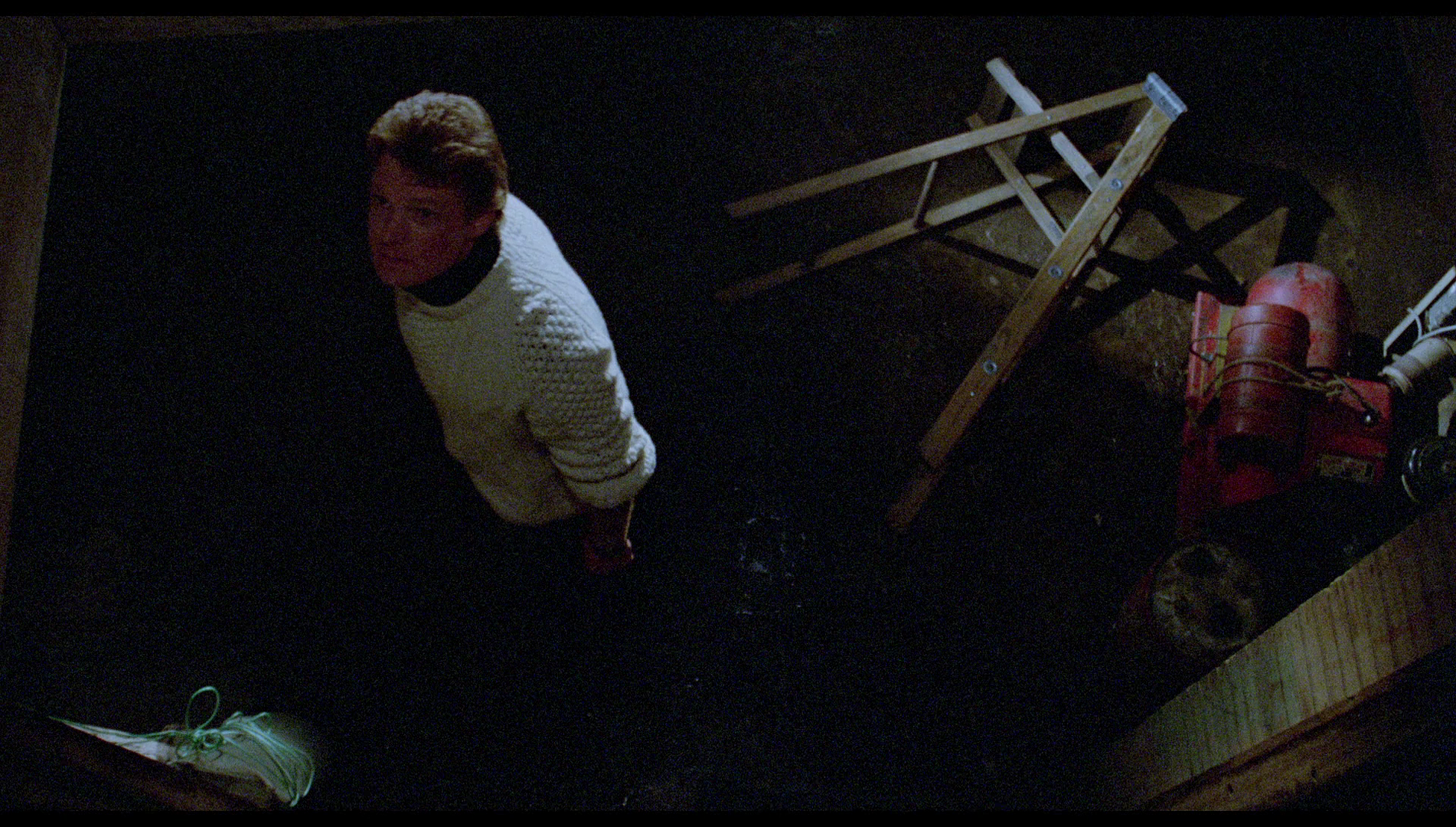 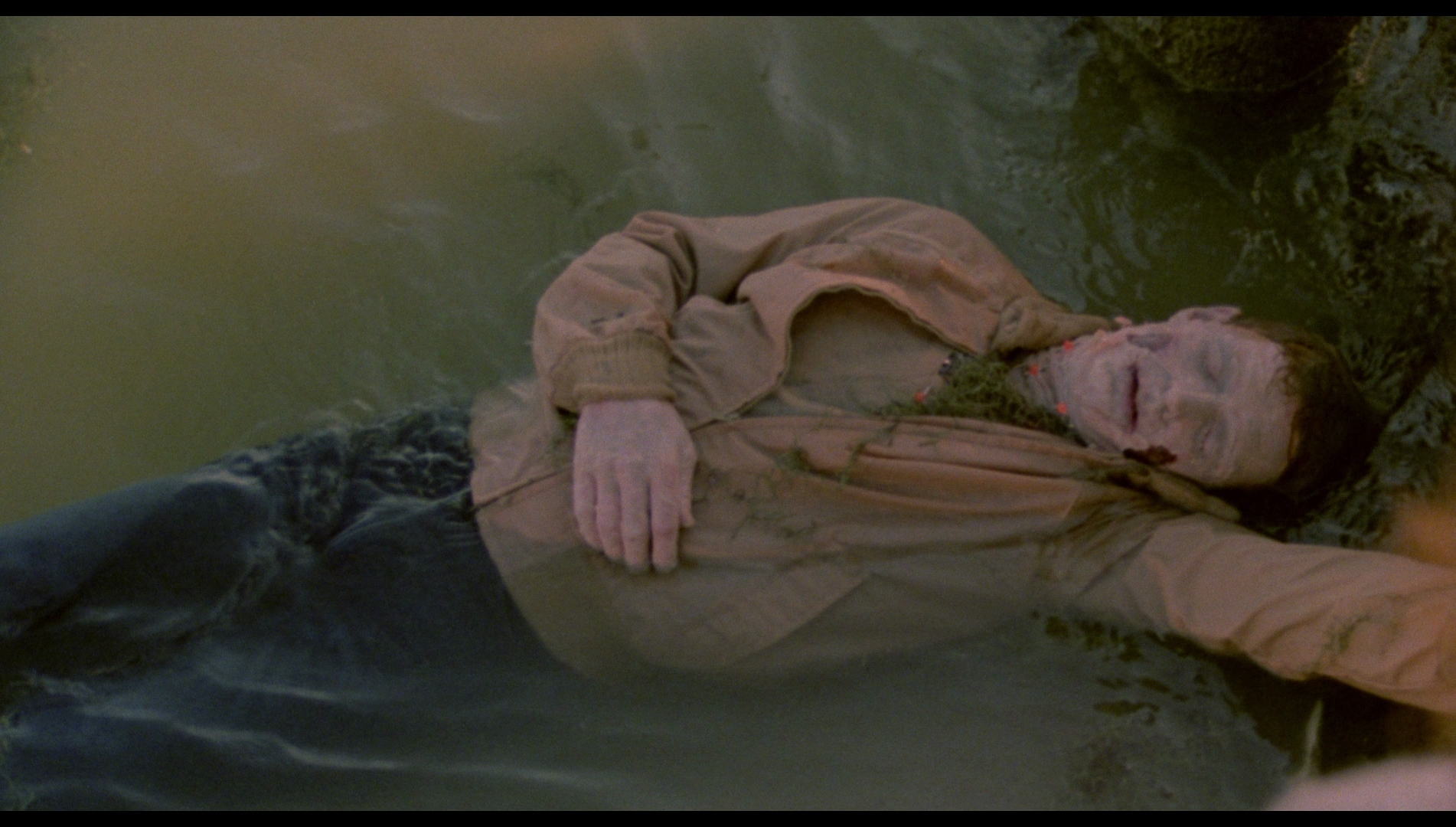
Video
 The presentation of The Slayer takes up approximately 22Gb of space on the Blu-ray disc; using the AVC codec, the presentation is in 1080p. The previous BBFC-imposed cuts have been waived, and the film is uncut with a running time of 89:55 mins. The presentation of The Slayer takes up approximately 22Gb of space on the Blu-ray disc; using the AVC codec, the presentation is in 1080p. The previous BBFC-imposed cuts have been waived, and the film is uncut with a running time of 89:55 mins.
The film is presented in its original aspect ratio of 1.85:1. The 35mm colour photography is captured very well in this presentation, which is based on a 4k scan of the film’s original negative. Contrast levels are very good. Richly defined midtones are accompanied by deep shadows and balanced highlights: the film features a couple of sequences, including the opening sequence, which see the use of deep shadows surrounding the characters, and these scenes are represented very well here, Kay’s face in the opening sequence being picked out by the light which tapers off into deepest darkness around her. Colours are captured well, skintones being naturalistic whilst some of the richer colours (for example, the vibrant yellow of the opening titles) being presented with a consistent sense of depth. An excellen level of detail is presented throughout, with fine detail being particularly noticeable in close-ups. It’s a rich, textured image. The encode ensures that the presentation retains the structure of 35mm film. Damage is limited to a few white flecks and specks, though there’s a strange anomaly at 40:03, in which a horizontal line (which, bizarrely, looks more like tape damage than a scratch mark on the emulsion – the latter obviously being the most likely explanation for this mark) appears for a few frames. This can be seen in the first of the large screen grabs at the bottom of this review. (Look at the lower eyelid of Kay’s right eye.) In all, this is a superb presentation of a film that has previously been impossible to see in anything other than subpar home video transfers (firstly on VHS, and more recently via DVD releases from the likes of Vipco). 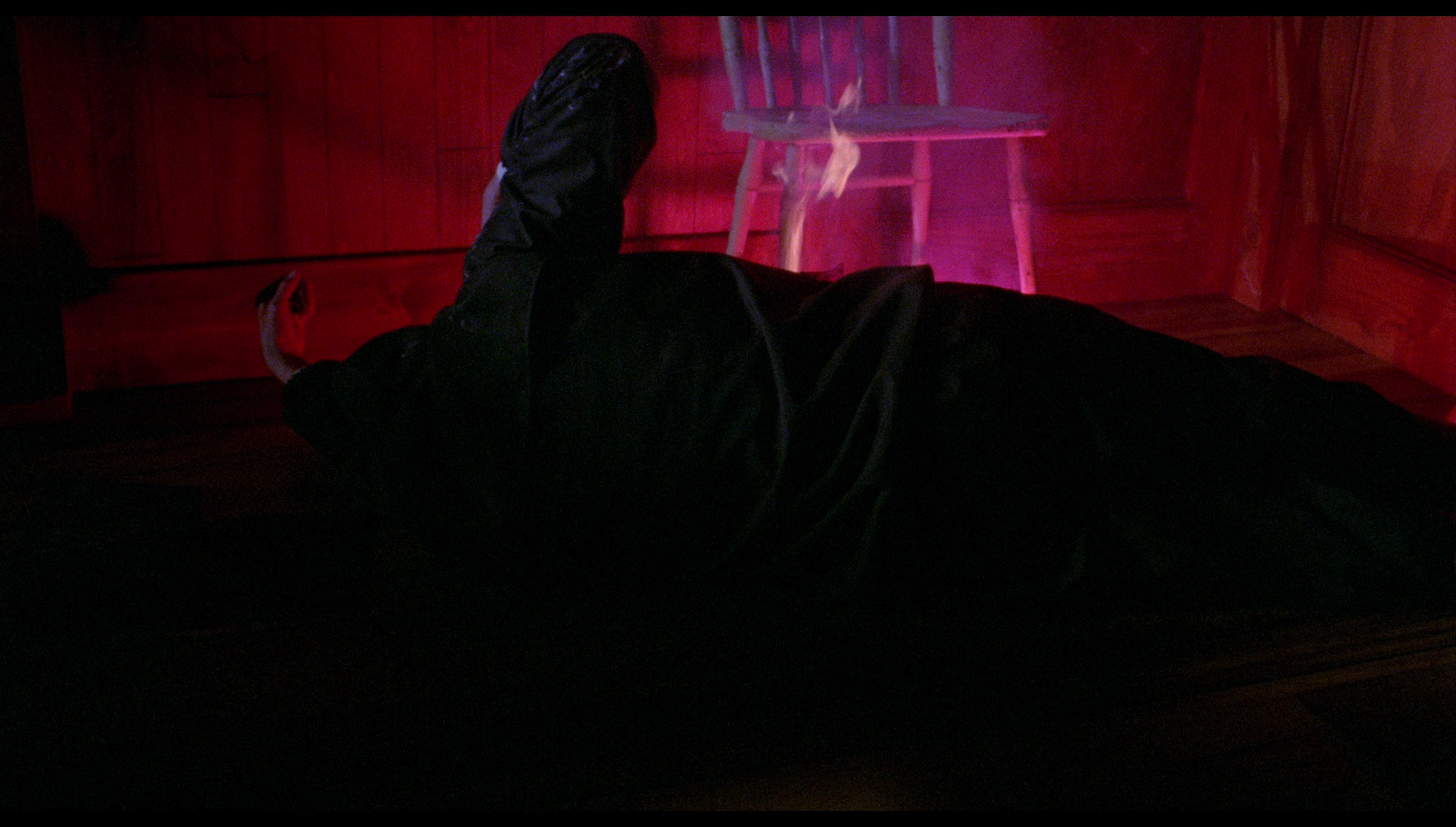 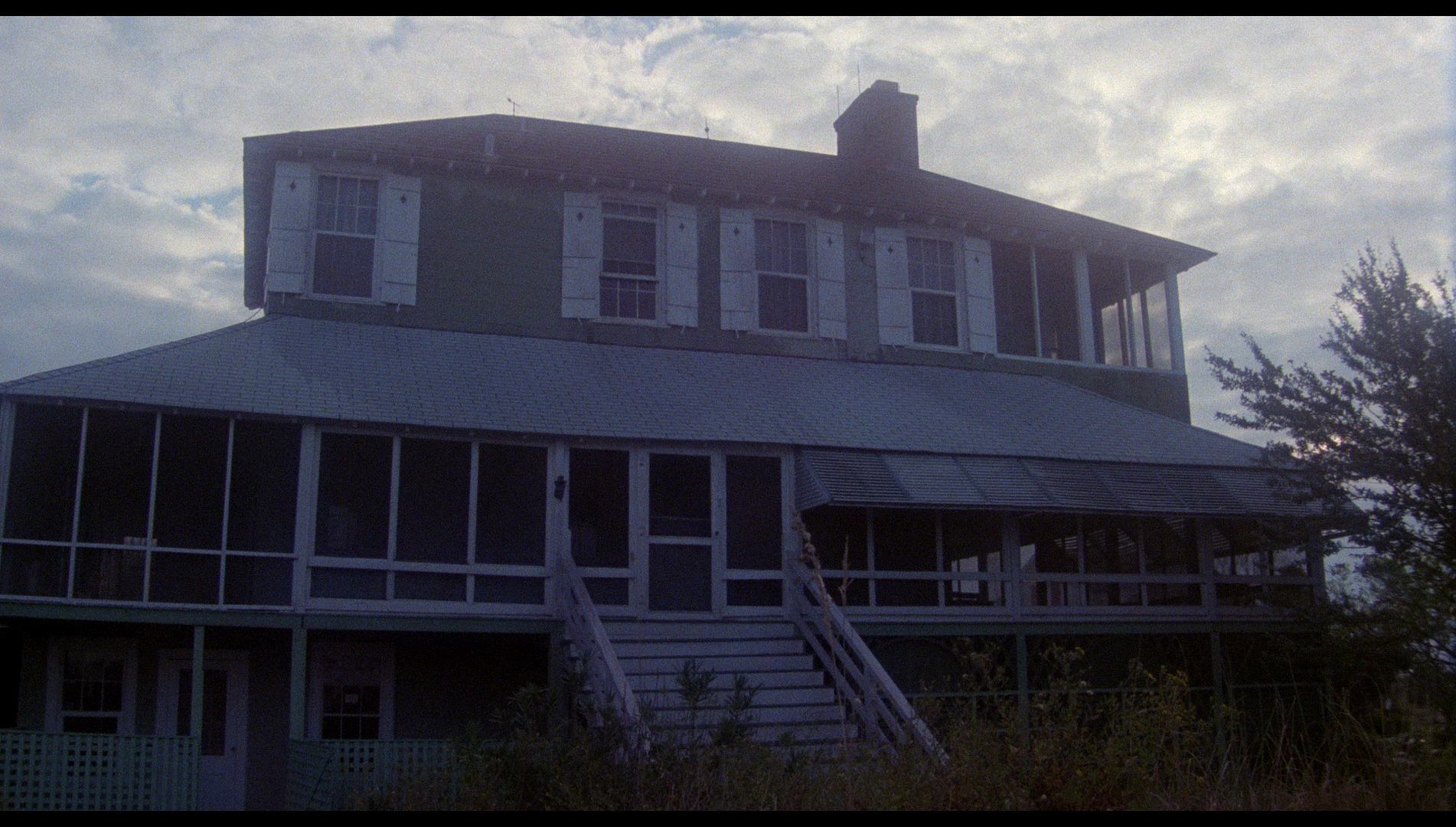 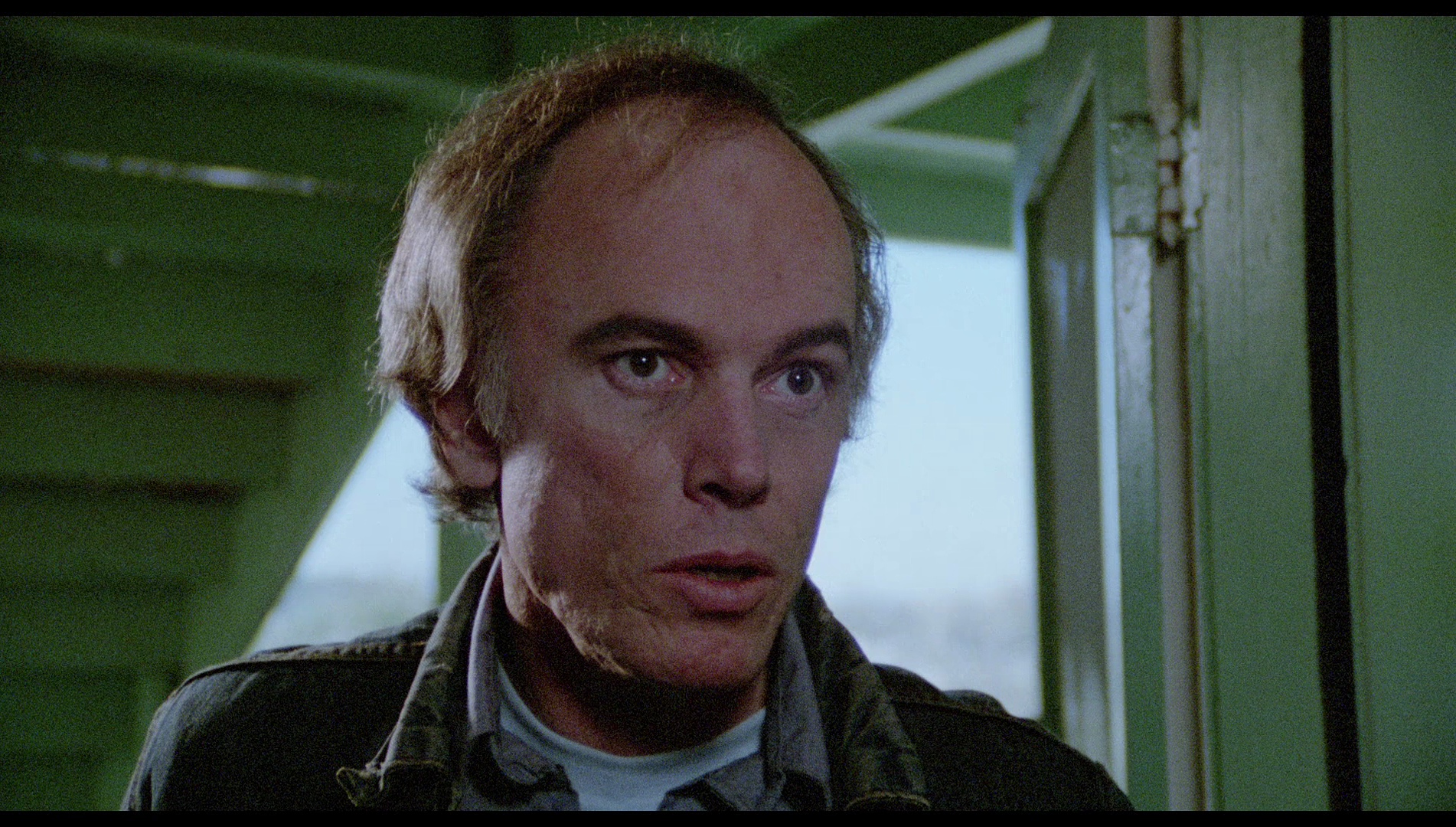
Audio
Audio is presented via a LPCM 1.0 mono track (in English). This is clean and clear throughout, demonstrating very good range: the orchestral score is superb, feeling very much like the kind of score associated with a production with a much higher budget. Optional English subtitles for the Hard of Hearing are included. These are easy to read and free from errors.
Extras
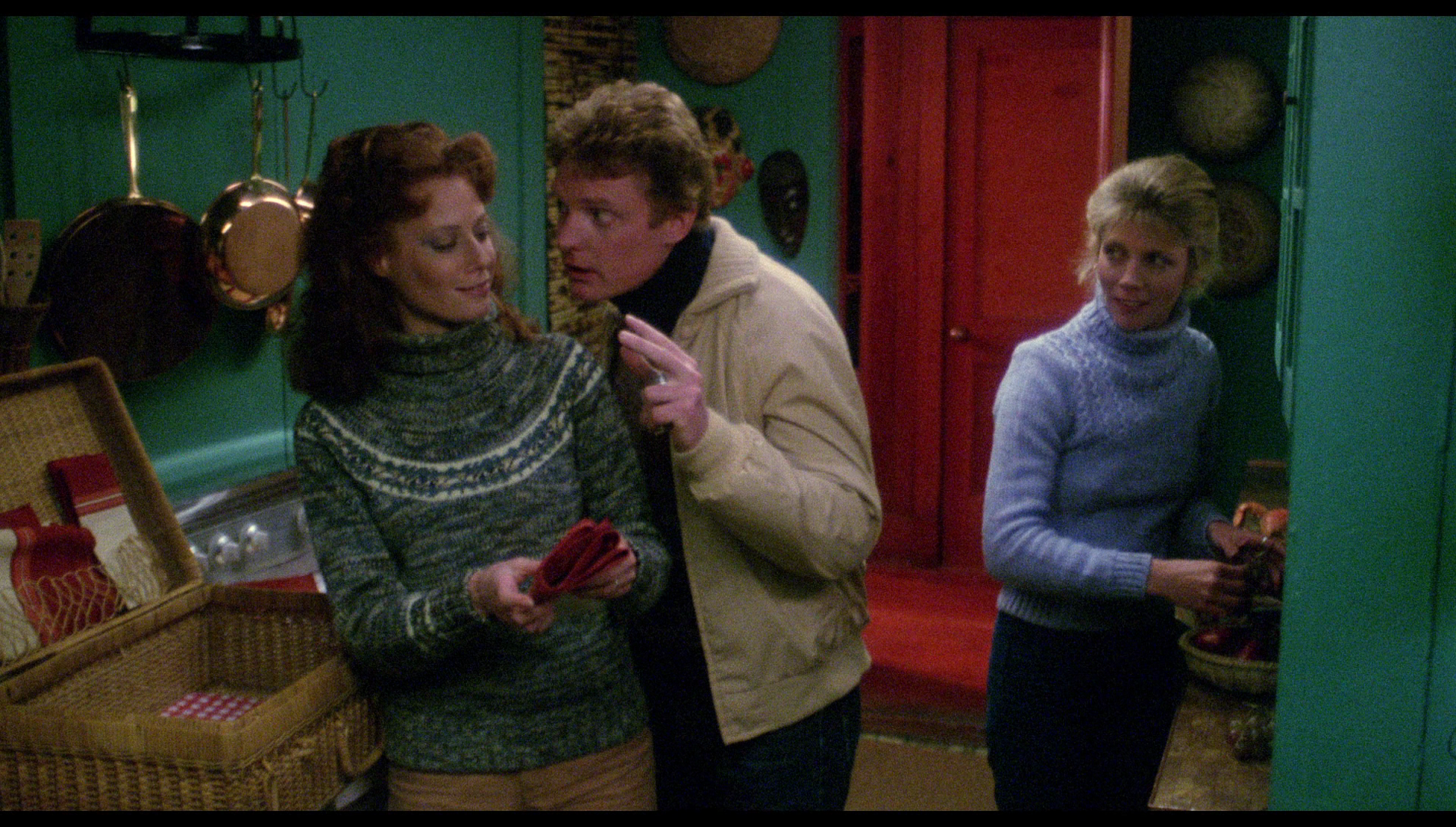 The disc includes: The disc includes:
- Audio commentary with J S Cardone, Eric Weston and Carol Kottenbrook. This commentary track is moderated by Ewan Cant. The commentators are animated, beginning with a discussion of the film’s release history. The participants argue against the ‘slasher’ picture label that the film has attracted, with Cardone suggesting he was influenced more by the horror films of Val Lewton and Jacques Tourneur. He and Weston suggest The Slayer is more of a psychological thriller than a slasher picture. There is some interesting discussion of the film’s locations and the ambiguities surrounding the role that Kay’s dreams play in the events that take place on the island. - Audio commentary with The Hysteria Continues. This typically excellent track from the chaps behind the podcast offers a discussion of the film’s themes and its relationship with other horror pictures of the same era, including The Slayer’s relationship with the cycle of American slasher films of the late 1970s and early 1980s. The troupe reflect on their first encounters with the film and discuss its distribution on both sides of the Atlantic. - ‘Nightmare Island: The Making of The Slayer’ (52:24). This newly-produced retrospective documentary features input from Cardone, the film’s writer and producer William Ewing, cinematographer Karen Grossman, actress Carol Kottenbrook, production executive Eric Weston, SFX designer Robert Short and second unit director of photography Arledge Armenaki. The participants admit that they were mostly inexperienced in filmmaking when the picture went into production but found their feet. Ewing distances the film from the slasher film cycle, though he admits that it has some similarities with the popular slasher pictures of the era – in particularly, its grisly visual effects. The realisation of these effects sequences is discussed in depth by Robert Short, who designed and created the effects for the picture. The interviewees reflect on their careers prior to the picture and discuss the production in a great deal of detail. They talk about the release of the film and the issues involved in its distribution – including the fact that prints were struck from a non-colour corrected answer print that removed the first sequence of the film. They reflect on their frustration that the film has never previously been released in a satisfactory home video version, praising the new presentation of the picture on Arrow’s Blu-ray release. 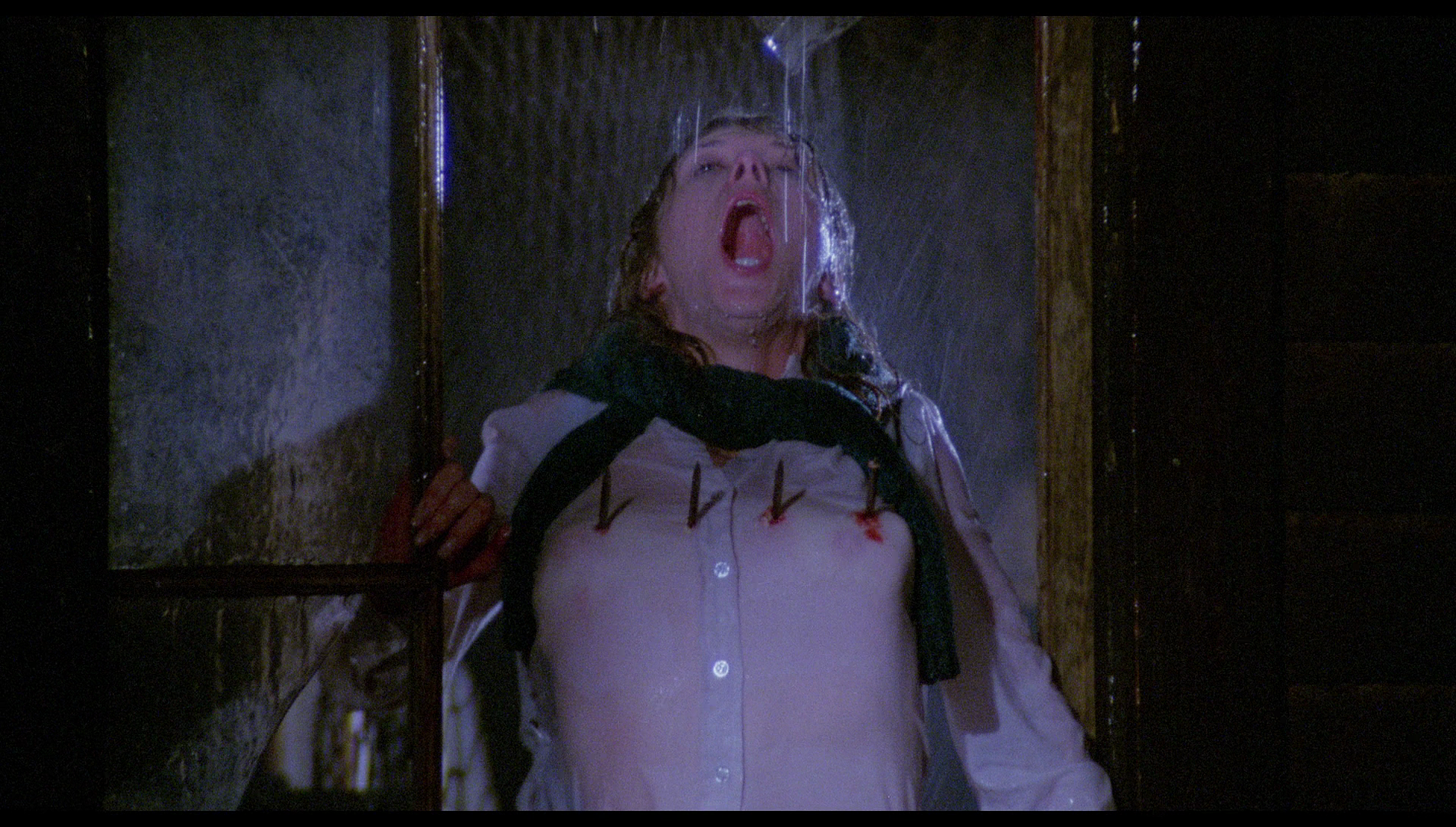
- ‘Return to Tybee: The Locations of The Slayer’ (13:18). Arledge Armenaki, the film’s camera operator and second unit DoP, revisits the locations used in the film. - ‘The Tybee Post Theater Experience’. Selecting this allows the viewer to watch the film with an audio recording of an audience watching The Slayer at the Tybee Post Theater, the derelict cinema seen in the film (which was restored and brought back to working order in 2010). The film is prefaced by o an introduction from Melissa Turner, the Tybee Post Theater’s executive director, and Ewan Cant (2:38). o a secondary, recorded introduction from Joe Cardone (1:04). o The screening is followed by a Q&A with Arledge Armenaki (17:50), the film’s second unit cinematographer and stills photographer. - Still Gallery (9:55). - Trailer (1:56). Strangely, this trailer uses snippets from Bernard Hermann’s score for Vertigo.
Overall
 Often arguably mislabelled as a slasher film, The Slayer has loftier ambitions and is particularly well-served by both a lush orchestral score and an extremely atmospheric location (Tybee Island). Often arguably mislabelled as a slasher film, The Slayer has loftier ambitions and is particularly well-served by both a lush orchestral score and an extremely atmospheric location (Tybee Island).
The Slayer could perhaps have done more to explore the relationship between Kay’s nightmares and her work as an artist, and the middle section of the narrative could be tighter and leaner, but overall The Slayer is an atmospheric horror film that has been badly represented on previous videocassette and DVD releases - not to mention its original cinema release. This new Blu-ray release from Arrow Video remedies this with a pleasing and uncut presentation of the main feature, a film that has been exceptionally poorly-served by previous home video releases, and an absolutely superb array of contextual material. The Slayer finally gets the release it deserves, thanks to Arrow Video. 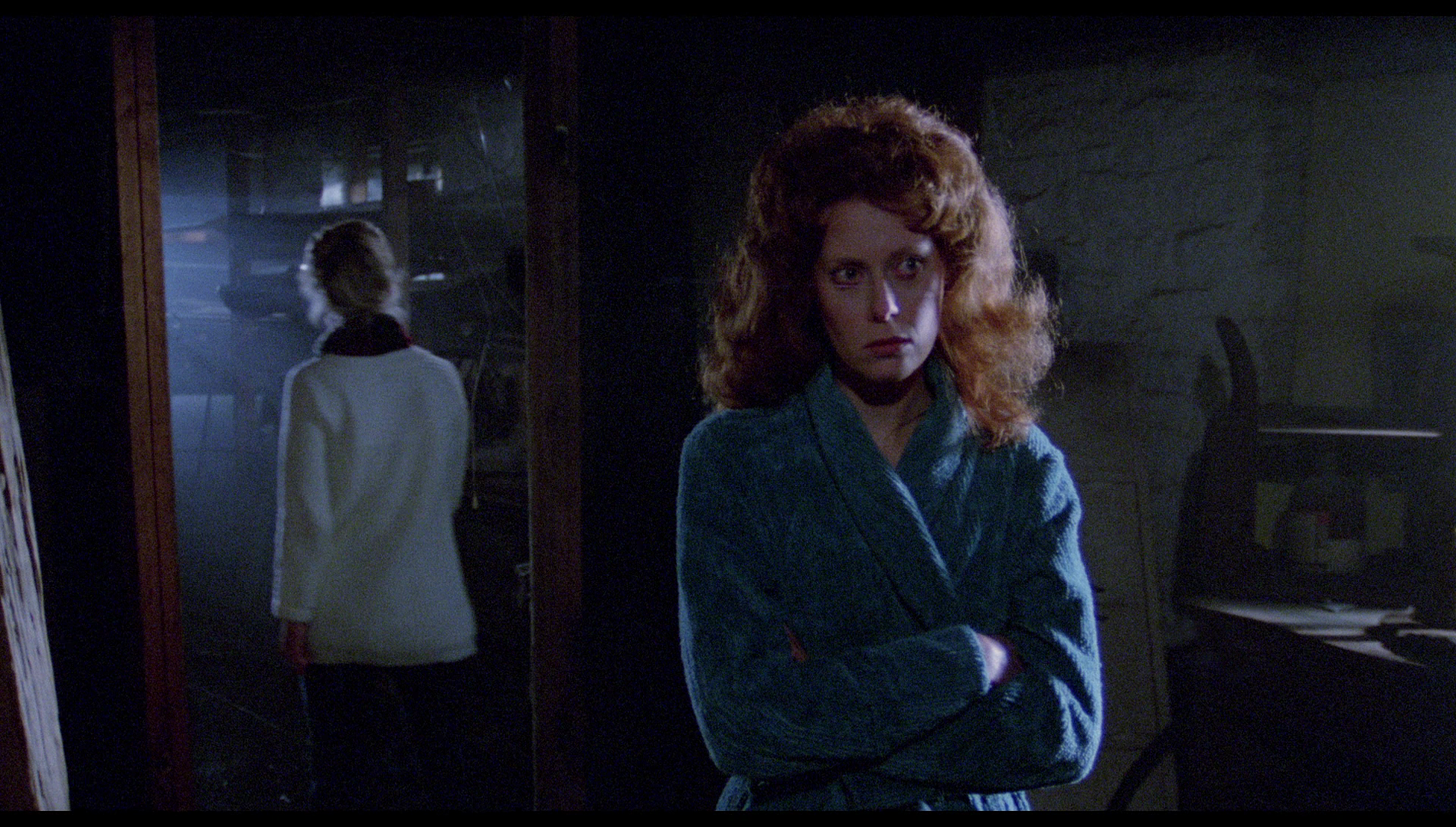
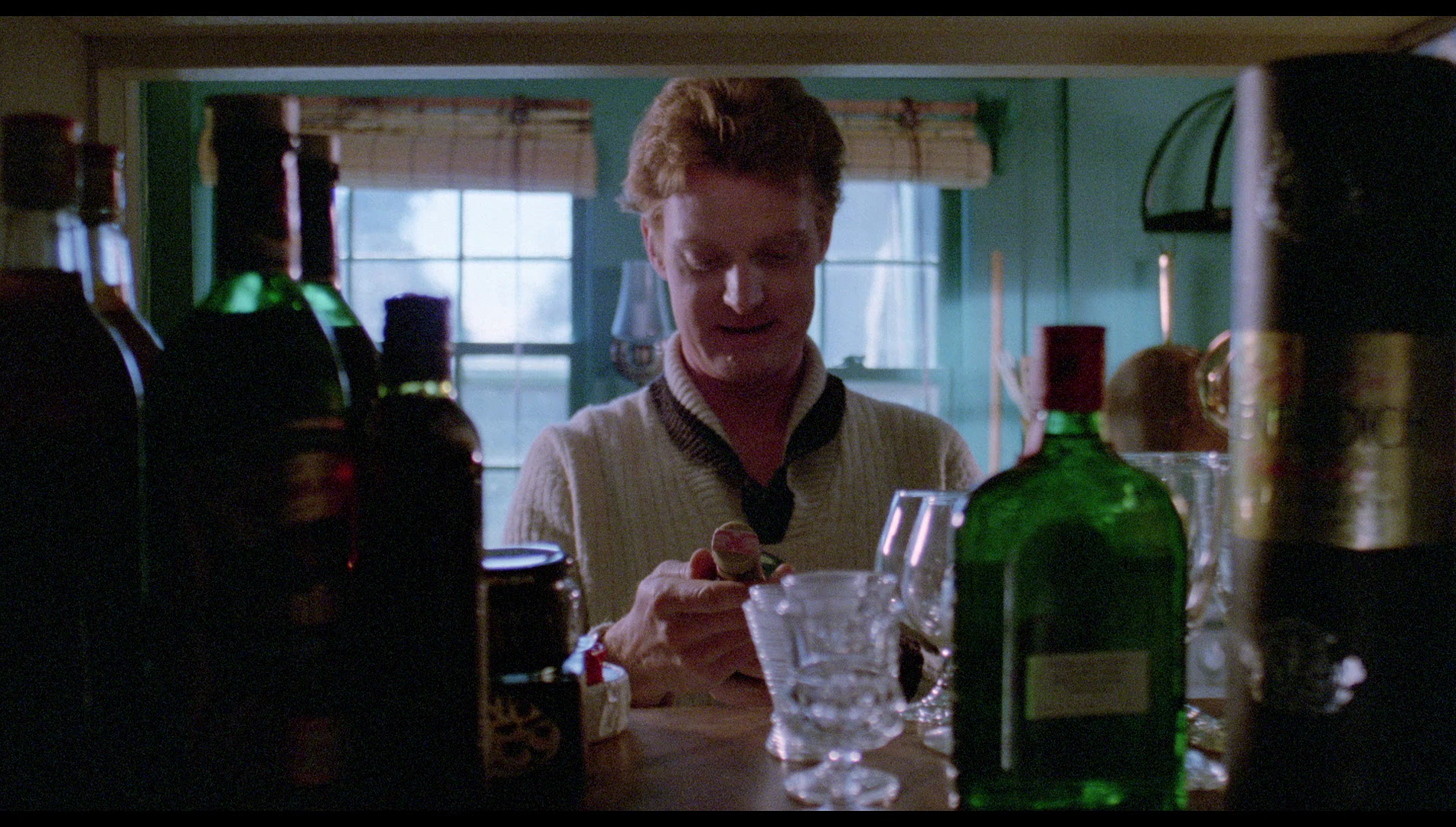

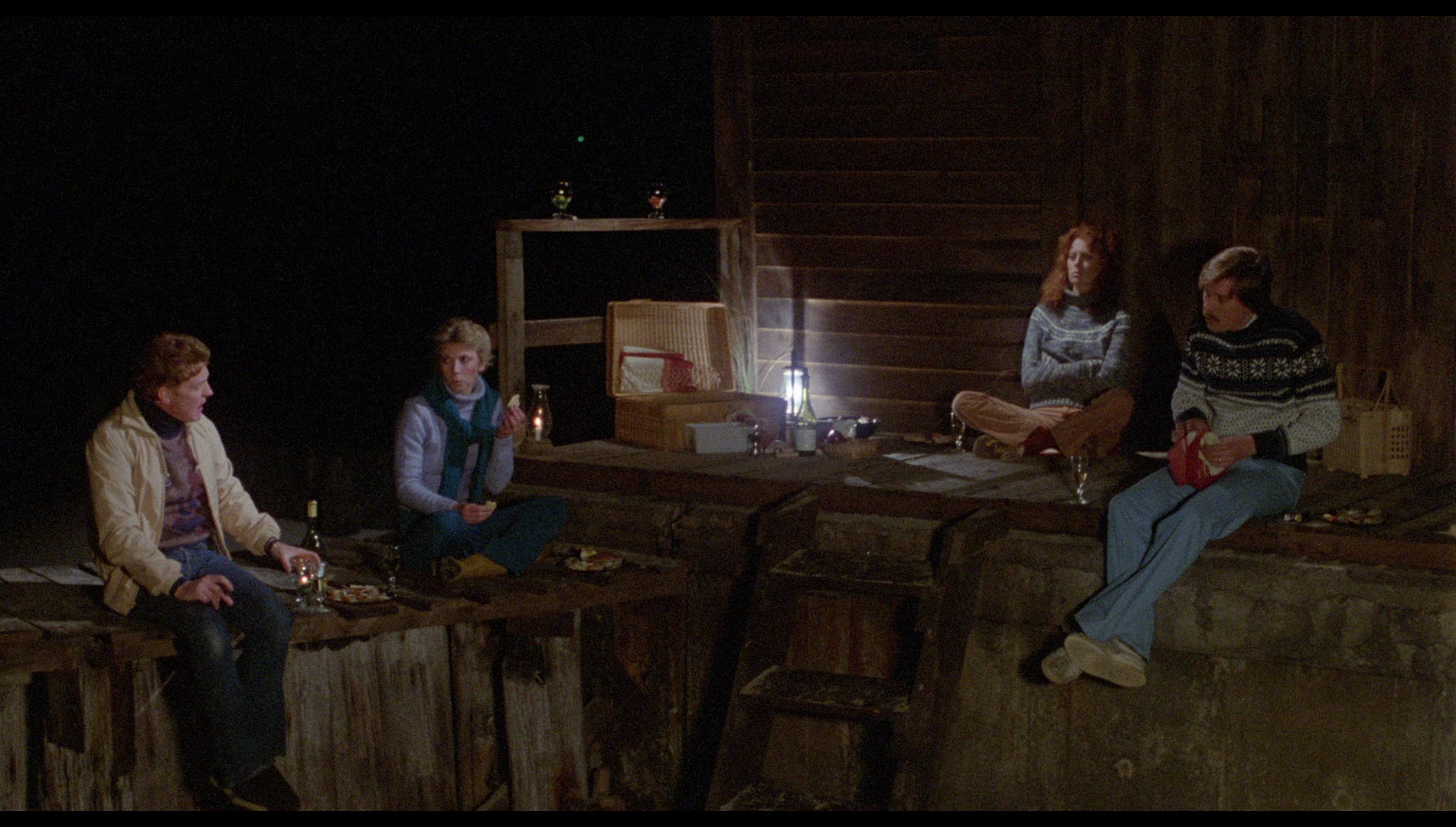
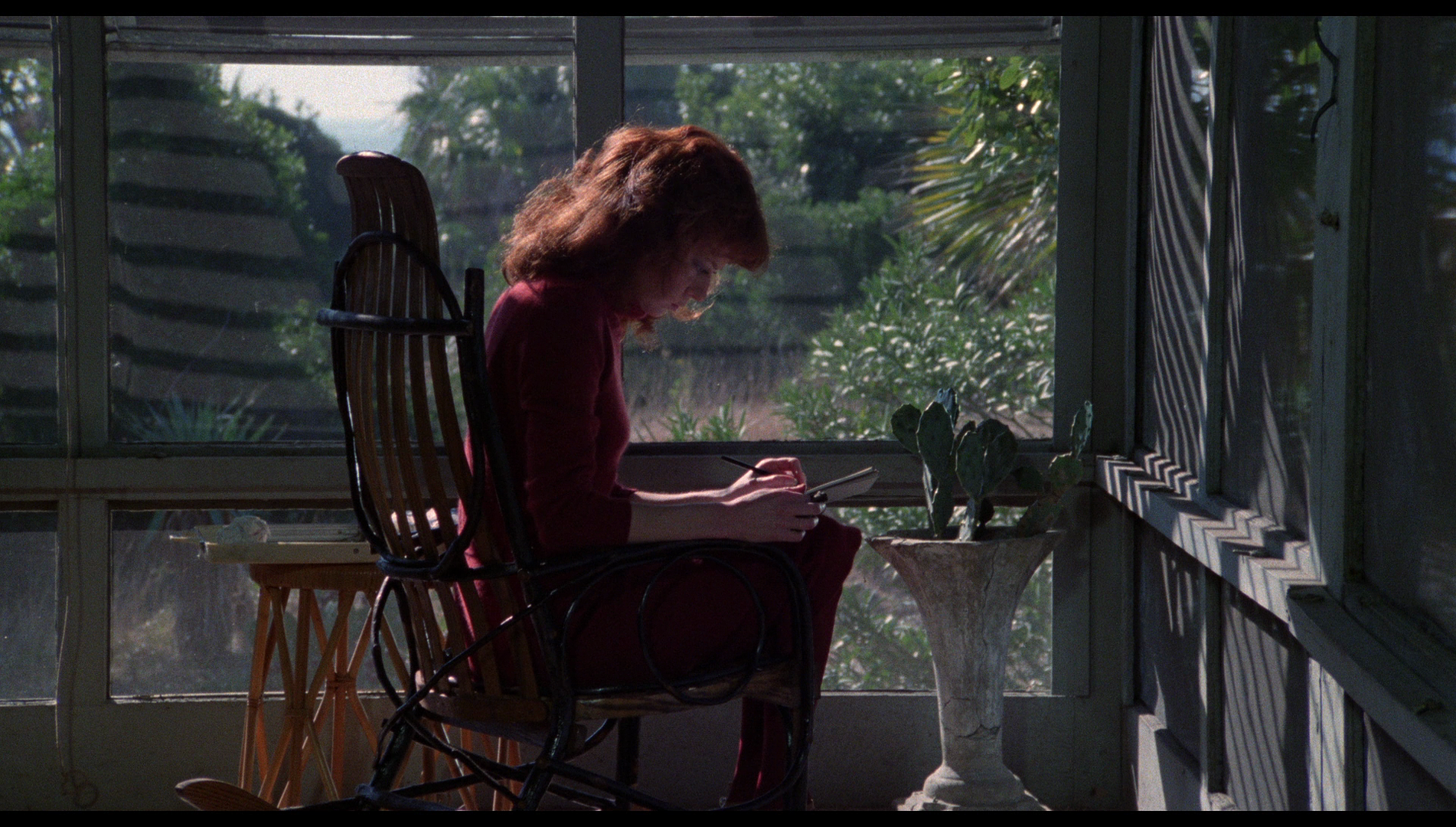
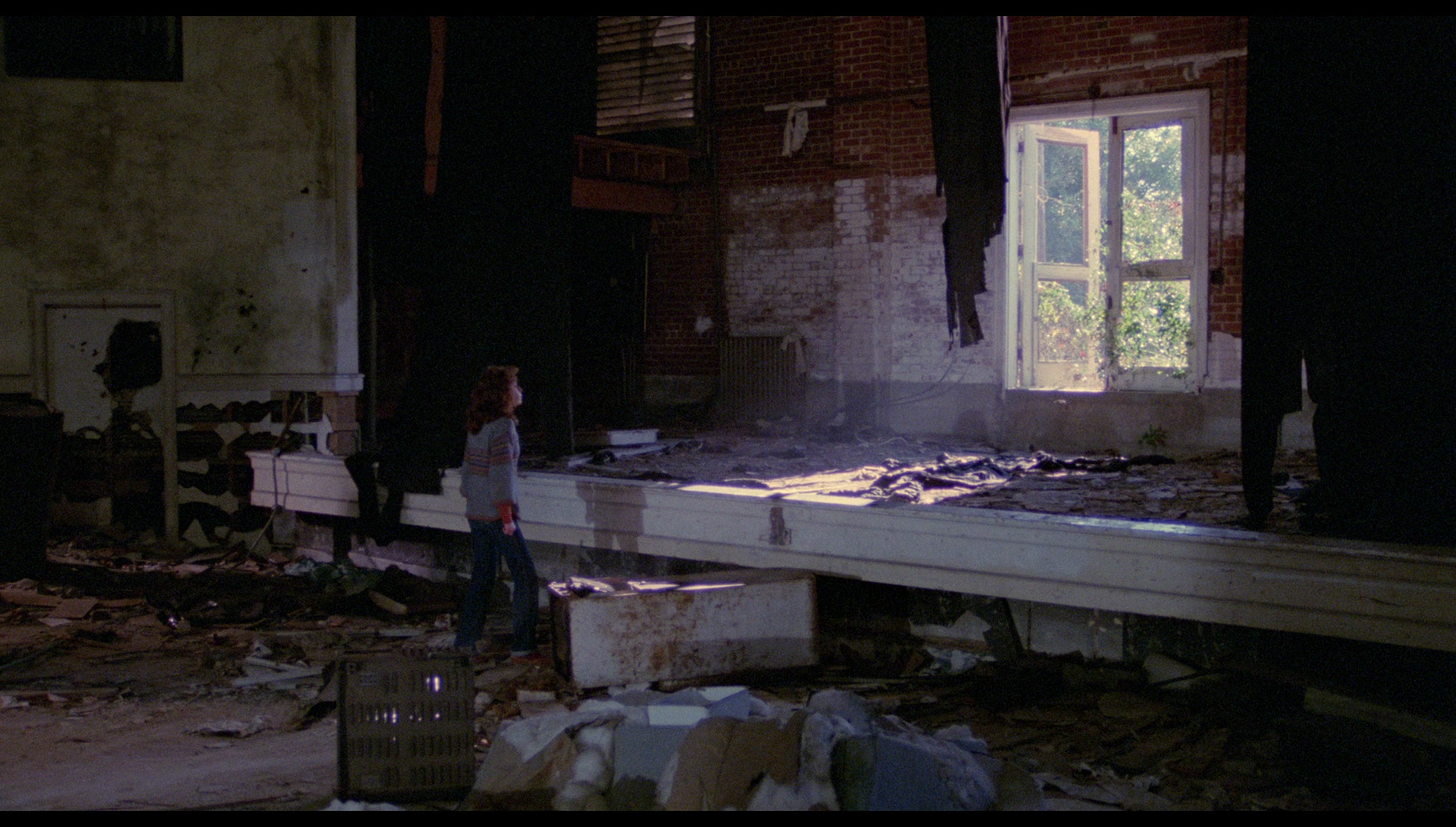
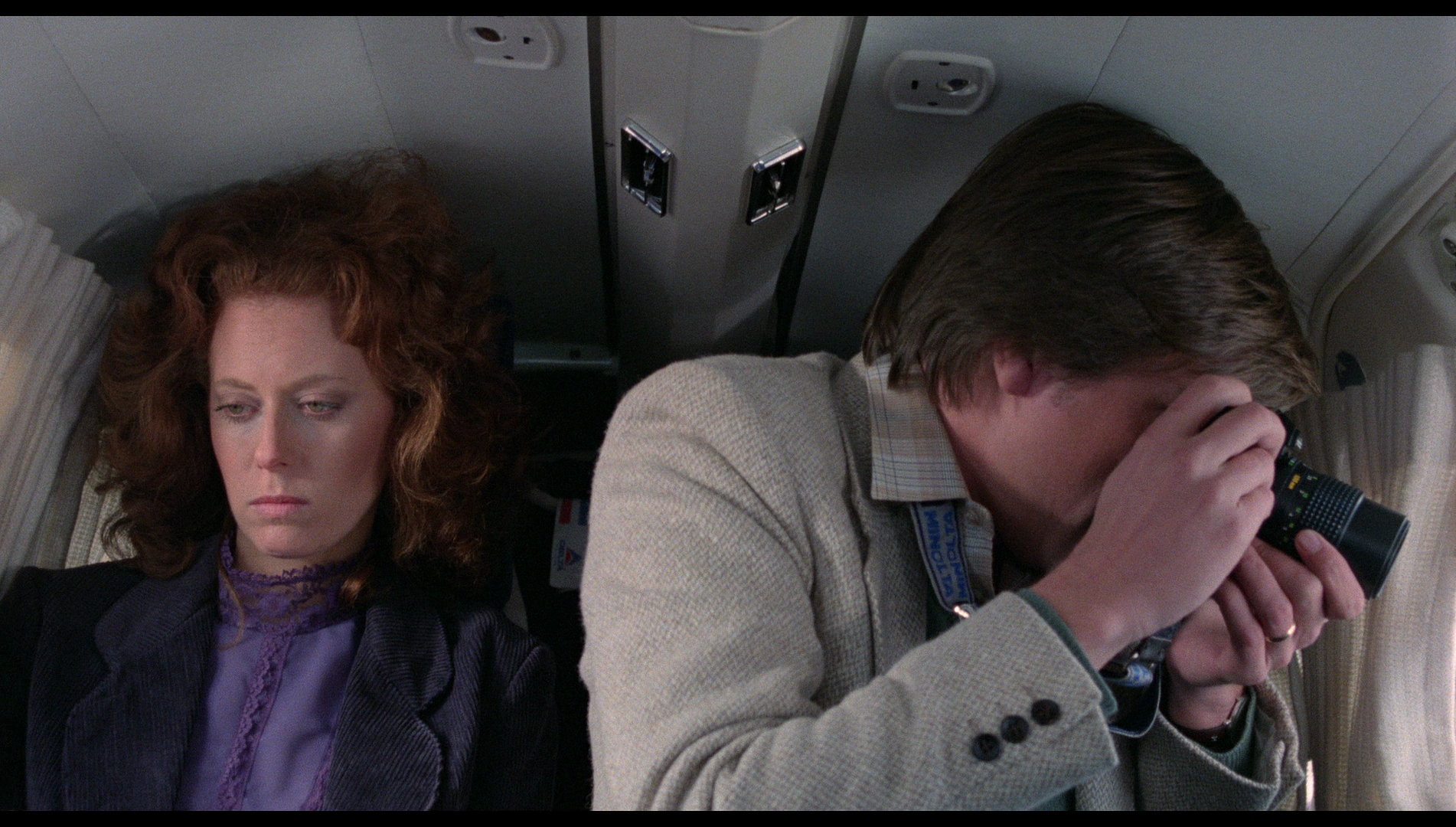
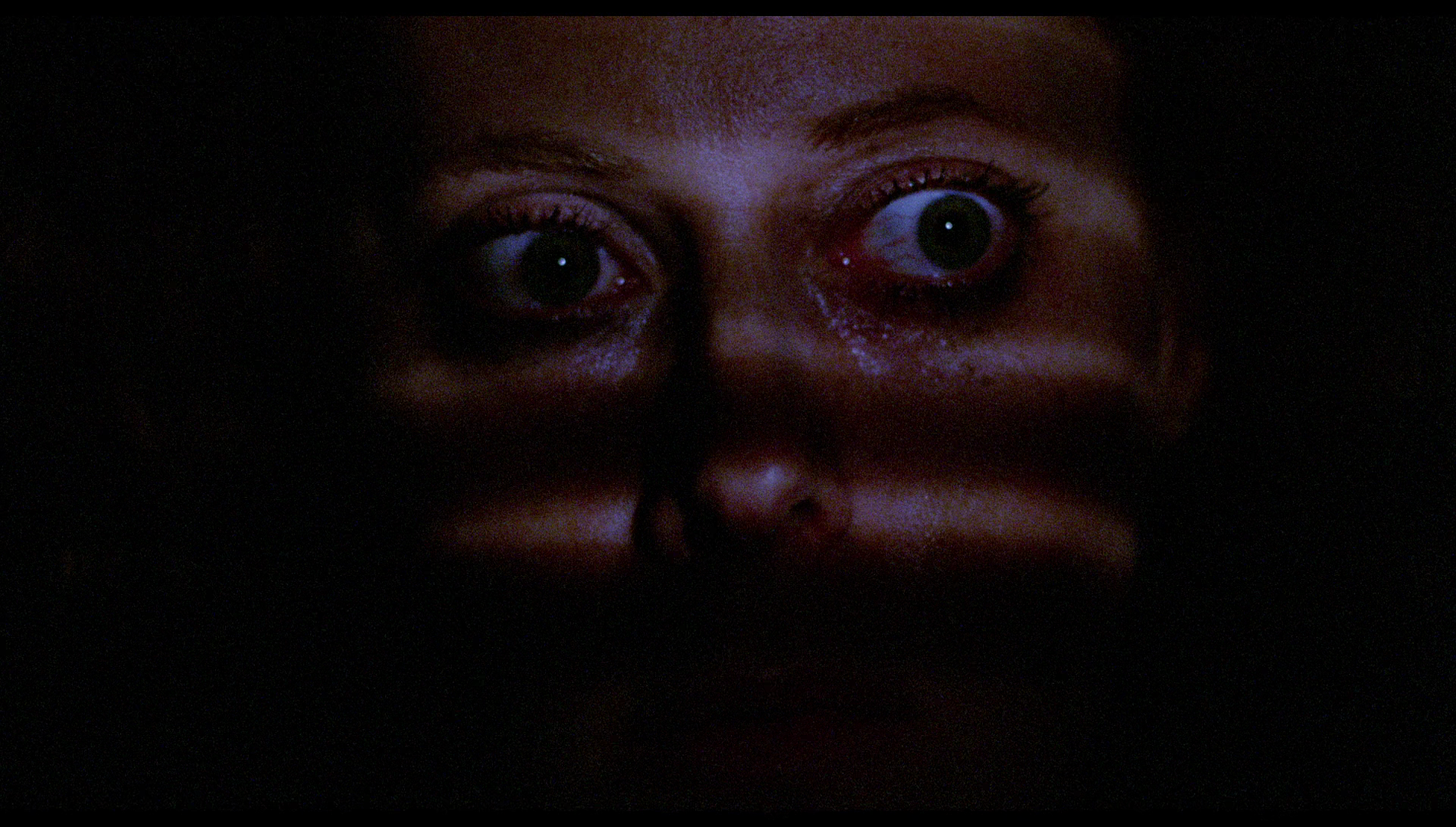
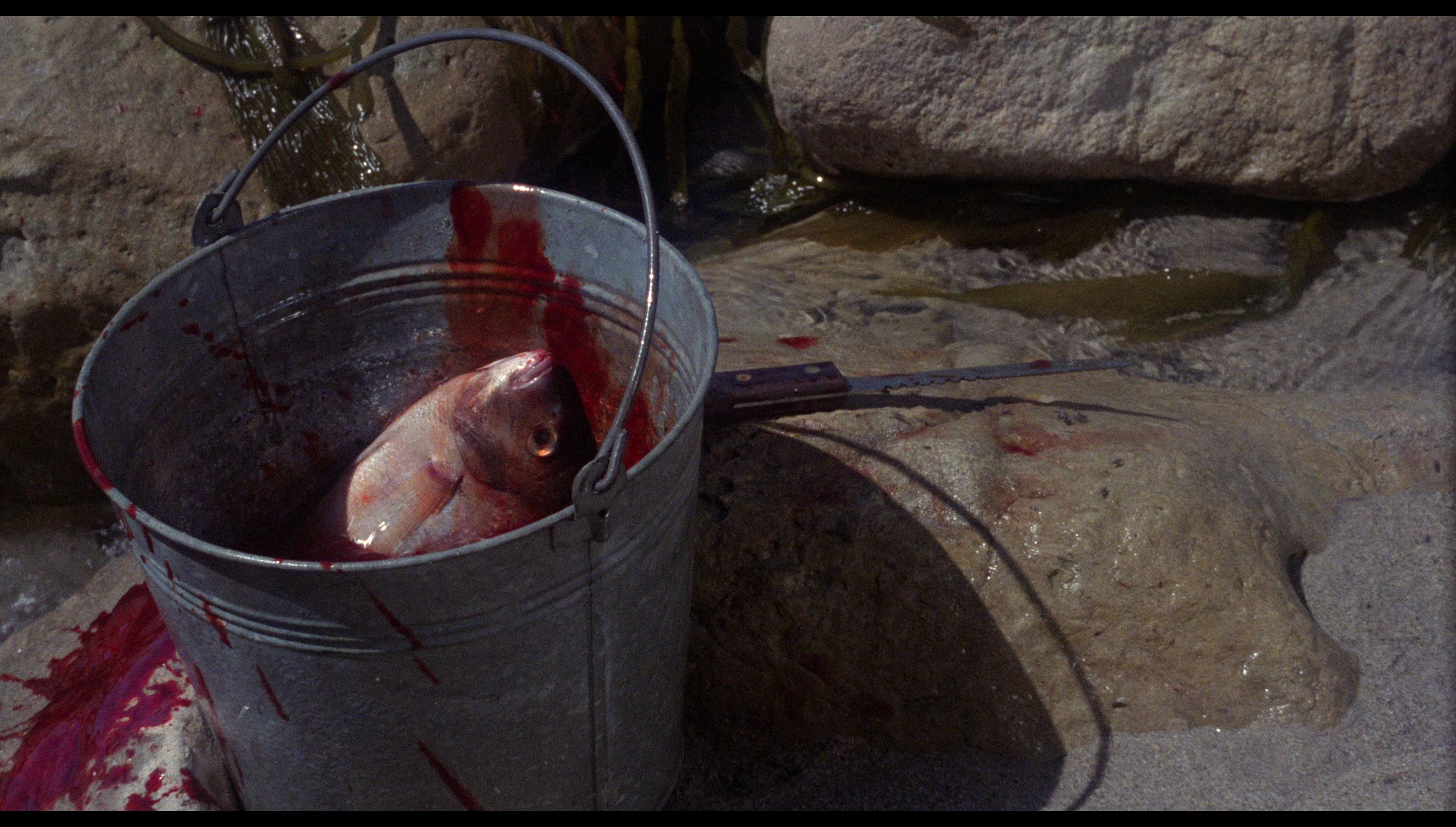
|
|||||

|